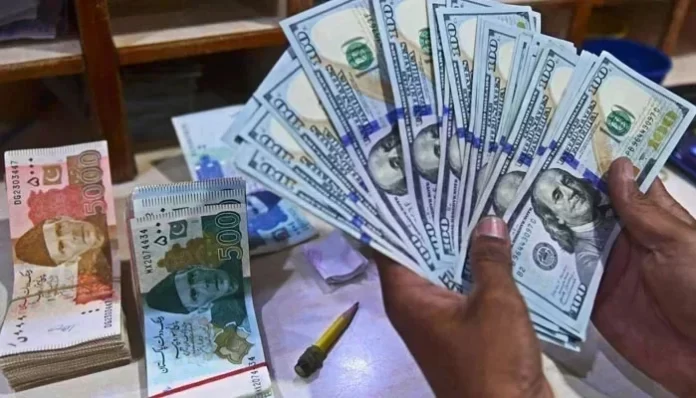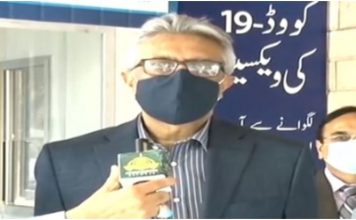KARACHI: The local currency on Thursday took an enormous blow in the interbank market during intraday trade as it depreciated by more than Rs24, a day after the lifting of the unofficial cap in the open market.
The local currency was trading at Rs255 against the dollar during intraday trade.
This is the lowest level the rupee has fallen against the dollar since July 28, 2022, when it touched Rs239.94 in the interbank market.
On the other hand, data released by the Exchange Companies Association of Pakistan (ECAP) showed that the greenback in the open market is being sold at 255 after appreciating by Rs12.
PTI blasts Dar
Meanwhile, Pakistan Tehreek-e-Insaf (PTI) leader Asad Umar slammed Finance Minister Ishaq Dar over his “false ego” which, according to him, dealt a massive blow to the national economy.
“Those, who were claiming to bring down the dollar below 200, they have pushed it above 240,” he said.
“Loss of billions of dollars in remittances and exports, thousands of businesses destroyed, and millions of people unemployed due to the false ego. Who will take responsibility for this disaster?”
Central Bank ‘adjusting’ exchange rate
Capital market expert Muhammad Saad Ali, commenting on the developments in the financial market, said, “the SBP is seemingly adjusting the exchange rate to the market rate – closer to the open market.” He added that the step comes to address the widening difference between the official and open market rates and curb the flow of dollars through the informal market.
The step is vital to ensure the resumption of the International Monetary Fund’s (IMF) loan programme, which has pushed Pakistan for a market-determined exchange rate, he added.
Much needed move
Meanwhile, talking to Geo. Tv Finance Ministry’s former adviser Dr Khaqan Hassan Najeeb said it was the “right move” to let the market determine the local currency’s value. He said the step was needed amid “severe dollar liquidity crunch, scarce reserves, as well as Pakistan’s need for moving ahead with the IMF”.
The economist added, “Pakistan is in a market-determined exchange rate regime. In this regime trade deficit, supply and demand factors, fundamentals of the economy make a lot of impact on currency changes.”
He further said that closing the gap between official and unofficial rates will force “remittances to move to formal channels as well as exporters to offload their receipts”.
The economist explained, “this may help ease the supply of dollars in the interbank.”














